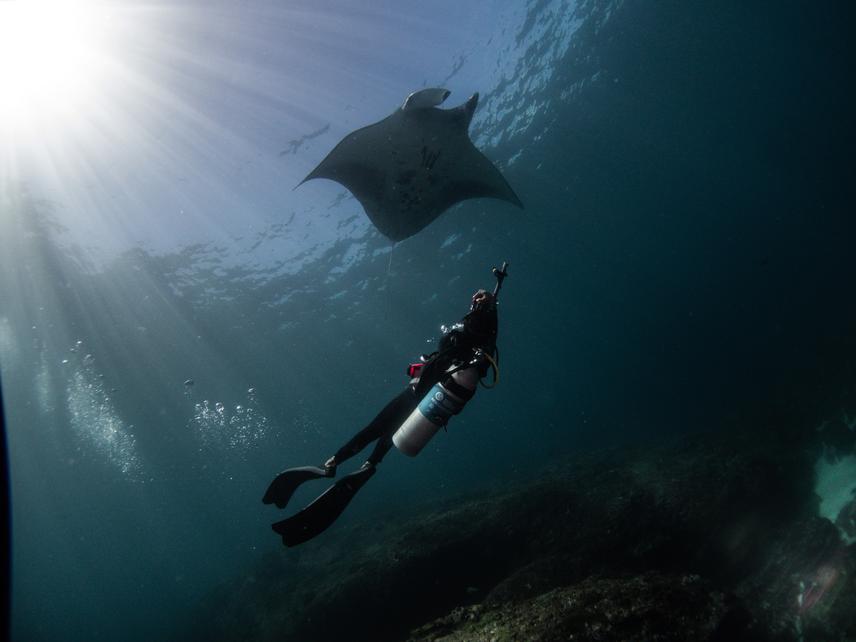Janis Argeswara
Other projects
9 Aug 2023
Conservation of Threatened Manta Rays in a Key Reproductive Habitat - Nusa Penida MPA, Indonesia
Manta rays are listed as ‘Vulnerable’ on the IUCN Red list and have one of the lowest reproductive rates of all sharks and rays. However, little is known about the early life stages of manta rays, growth and reproductive rates, and environmental influences on reproduction. Filling in these key knowledge gaps is necessary to direct further conservation strategies. A study on manta ray habitat uses and population dynamics within the popular manta ray tourism location - the Nusa Penida Marine Protected Area (MPA), Indonesia, showed different population structures at two manta ray sites within the MPA. One site is mainly for feeding and frequented by juveniles, while the other is where cleaning and social behaviours, including reproduction, occur and is primarily used by adults.

Measuring mantas.
Thus, the Nusa Penida MPA encompasses critical manta ray reproductive habitat and potentially a manta ray nursery. Studies on reproduction are limited, and little information exists on birth and growth rates and the habitats used by young. The considerable number of individuals using Nusa Penida MPA year-round make it an ideal location to study manta ray reproduction, specifically to gain a better understanding of habitat use by younger age classes, establish growth rates, monitor the reproductive rates of adults and environmental influences on reproduction. Further, threats to manta rays have been identified within the Nusa Penida MPA that need mitigation including, accidental entanglement and disfigurement caused by small scale subsistence fisheries, marine plastic pollution, and plastic ingestion, and habitat and behaviour disturbance by poor marine tourism practices. In-depth knowledge of manta ray reproductive ecology will assist the local government in supporting strategies designed to limit the disturbance to manta rays, particularly in the wake of the post-pandemic return to tourism, increase local awareness about persistent threats to manta rays in the area, and motivate better stewardship from community stakeholders through education.